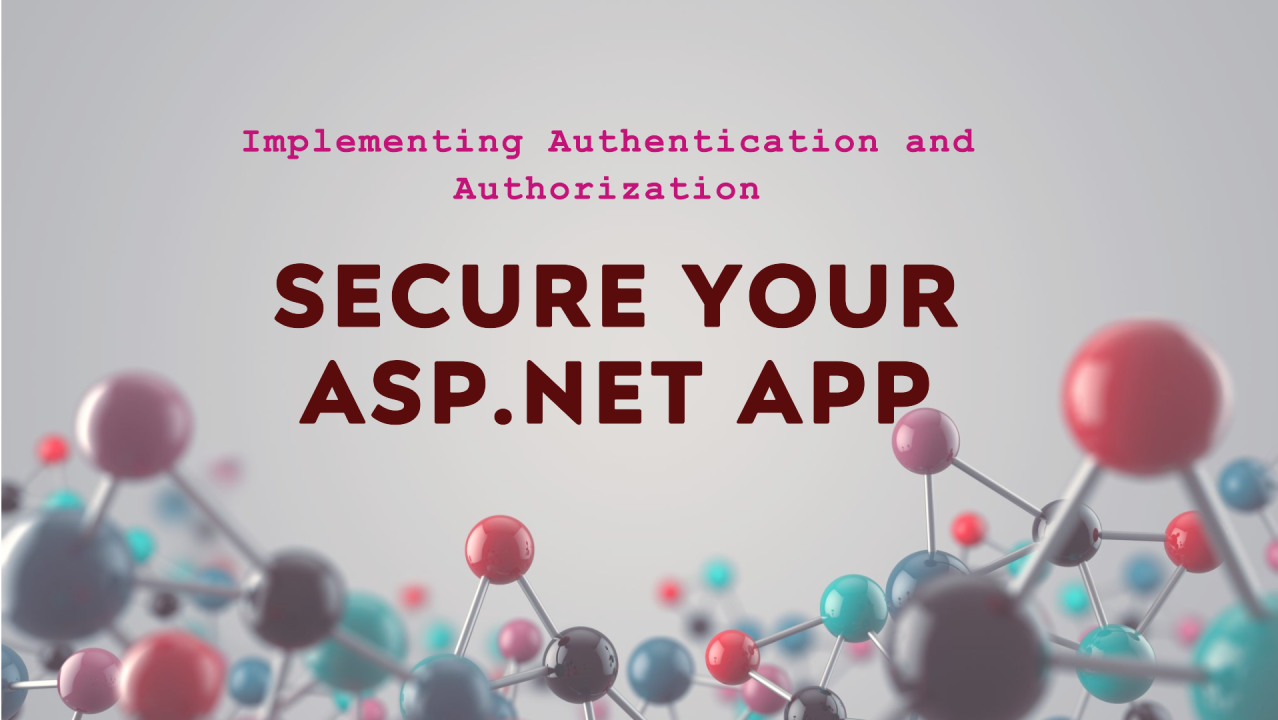Implementing authentication and authorization is essential for building secure ASP.NET applications. These processes ensure that users are who they claim to be and are allowed to perform specific actions within the application. This blog will guide you through the concepts and steps necessary to implement robust authentication and authorization in your ASP.NET application.
Understanding Authentication and Authorization
Authentication is the process of verifying the identity of a user. It ensures that a user is who they claim to be, typically by checking a username and password or using more advanced methods like biometrics or multi-factor authentication (MFA).
Authorization is the process of determining what an authenticated user is allowed to do. It involves assigning roles and permissions to users and ensuring they can only access resources and perform actions that they are permitted to.
Setting Up ASP.NET Identity
ASP.NET Identity is a membership system that adds login functionality to your application. It handles everything from password storage to user roles. Here are the steps to set it up:
- Create a New ASP.NET Project
- Start by creating a new ASP.NET Core Web Application in Visual Studio. Choose a template that includes authentication options, such as “Web Application” with “Individual User Accounts.”
- Install Necessary Packages
- Ensure your project includes essential packages like Microsoft.AspNetCore.Identity, EntityFrameworkCore, and Microsoft.AspNetCore.Authentication.Cookies.
- Configure Services
- In your project’s configuration file (usually Startup.cs), configure the services required for ASP.NET Identity. This includes setting up the database context, configuring identity options (like password complexity requirements), and adding authentication and authorization middleware.
Implementing Authentication
Authentication involves creating user accounts and handling the login process. Here are the key steps:
- User Registration
- Implement a registration process where new users can sign up by providing necessary details like email and password. This process typically involves form validation, creating the user account, and storing it securely in the database.
- User Login
- Implement a login mechanism that authenticates users based on their credentials. This involves checking the provided username and password against the stored data and managing user sessions.
- Password Management
- Provide functionality for users to reset their passwords. This often includes sending password reset links to registered email addresses and securely updating passwords.
Implementing Authorization
Authorization controls access to different parts of your application based on user roles and permissions. Here’s how you can implement it:
- Define Roles
- Define roles in your application such as “Admin”, “User”, or “Manager”. These roles help in categorizing users based on their access levels and permissions.
- Assign Roles to Users
- Assign appropriate roles to users either during the registration process or through an administrative interface. This ensures that users have the correct permissions for their role.
- Role-Based Access Control
- Use role-based access control to protect parts of your application. Specify which roles can access certain resources or perform specific actions. For example, you might restrict access to administrative features to users with the “Admin” role.
- Policy-Based Authorization
- Implement policy-based authorization for more granular control. Policies are rules that you define to determine whether a user has access to a resource. These can be based on multiple criteria, such as roles, claims, or custom logic.
Best Practices for Authentication and Authorization
- Use Strong Passwords
- Enforce strong password policies to ensure user accounts are secure. This includes minimum length requirements, complexity (mix of characters), and regular password changes.
- Enable Multi-Factor Authentication (MFA)
- Enhance security by enabling MFA, requiring users to provide additional verification (such as a code sent to their phone) when logging in.
- Regularly Update Dependencies
- Keep your application dependencies up to date to benefit from security patches and improvements. This is crucial for maintaining the security of your application.
- Secure Communication
- Always use HTTPS to encrypt data transmitted between the client and server, protecting sensitive information from being intercepted.
- Implement Account Lockout
- Protect against brute force attacks by implementing account lockout mechanisms. Lock accounts after a certain number of failed login attempts.
Implementing authentication and authorization in ASP.NET is vital for building secure web applications. By using ASP.NET Identity, you can handle user management, authentication, and authorization efficiently. Following best practices ensures your application remains secure and provides a positive experience for your users. With these steps and considerations, you can build robust security features into your ASP.NET applications, safeguarding user data and controlling access to your application’s resources.

